The Phantom Carriage
9 /10 1 Votes9
100% Rotten Tomatoes Genre Drama, Fantasy, Horror Screenplay Victor Sjostrom | 8.1/10 IMDb Director Victor Sjostrom Music director Jonathan Richman Duration Country Sweden | |||||||||||||||||||||||||||||||||
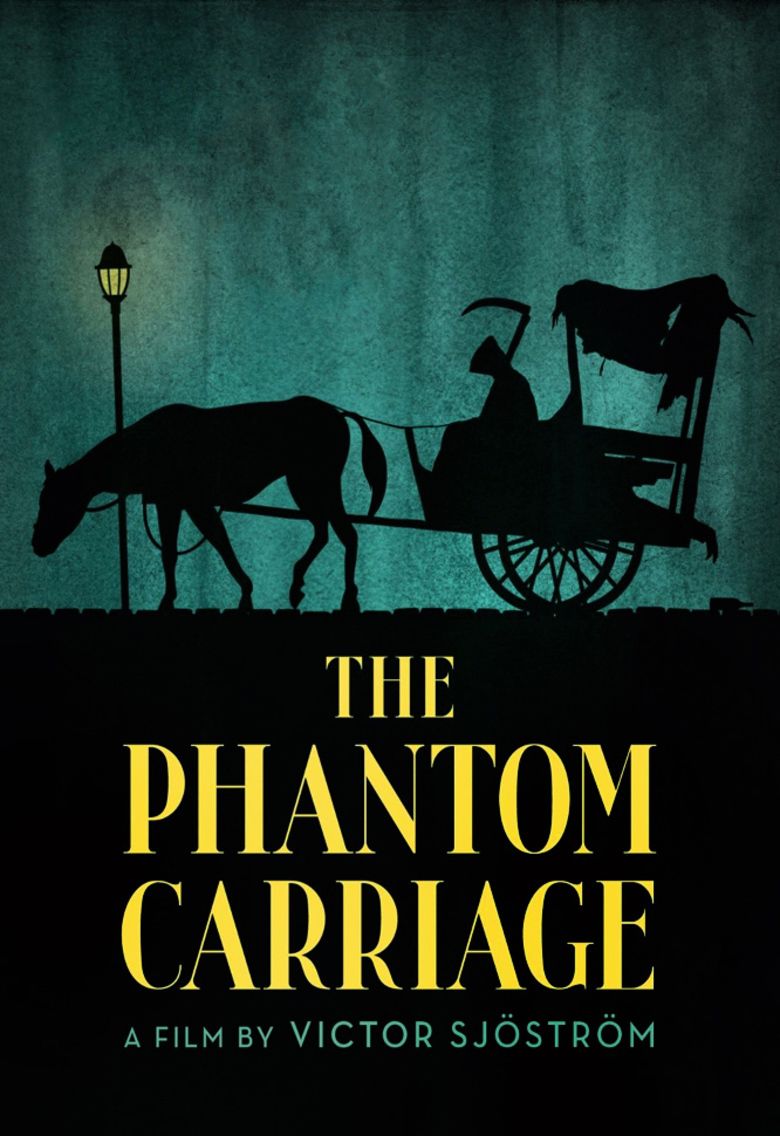 | ||||||||||||||||||||||||||||||||||
Language Silent filmSwedish intertitles Writer Novel , Selma Lagerlof Release date 1 January 1921 (1921-01-01) (Sweden)1 January 1922 (1922-01-01) (UK)4 June 1922 (1922-06-04) (U.S.) Cast (David Holm), (Sa femme), (Georges), (Soeur Edit), (La mère de soeur Edith), Mona Geijer-Falkner (Waitress)Similar movies How Foolshead Paid His Debts , Le voleur invisible , Unusual Cooking , Modern Sculptors , Madagascar: Escape 2 Africa , Paperman | ||||||||||||||||||||||||||||||||||
The Phantom Carriage (Swedish: Körkarlen, literally "The Wagoner") is a 1921 Swedish horror film generally considered to be one of the central works in the history of Swedish cinema. Released on New Year's Day 1921, it was directed by and starred Victor Sjöström, alongside Hilda Borgström, Tore Svennberg and Astrid Holm. It is based on the novel Thy Soul Shall Bear Witness! (Körkarlen; 1912), by Nobel prize-winning Swedish author Selma Lagerlöf.
Contents
- Three reasons the phantom carriage
- Plot
- Cast
- Development
- Filming
- Post production
- Reception
- Influence
- Soundtracks home media
- References
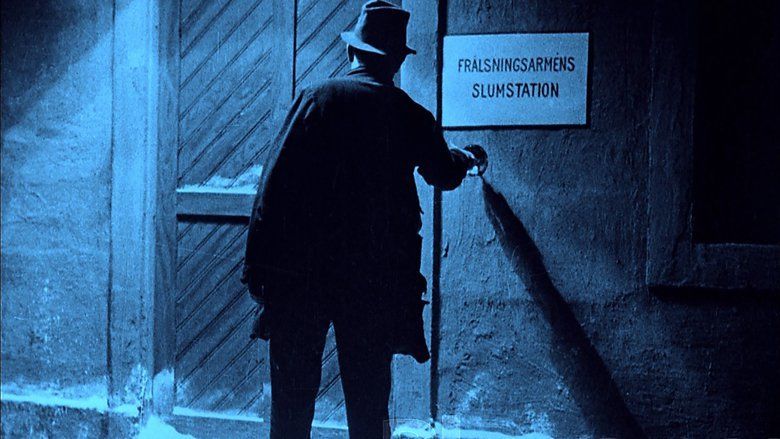
The film is notable for its special effects, its advanced (for the time) narrative structure with flashbacks within flashbacks, and for having been a major influence on Ingmar Bergman.
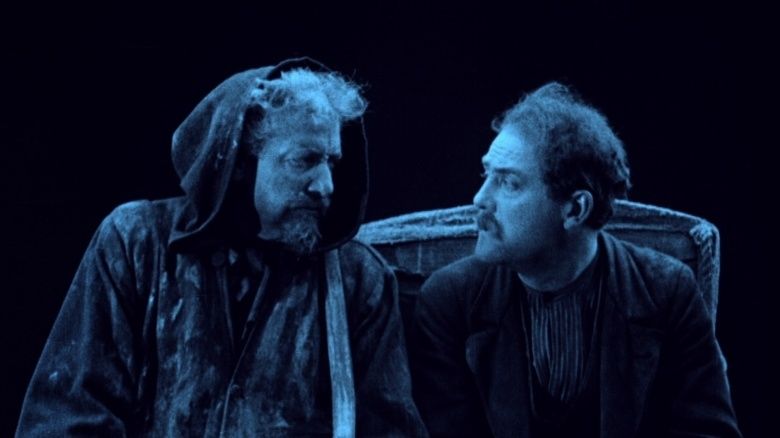
It is also known as The Phantom Chariot, Thy Soul Shall Bear Witness! and The Stroke of Midnight.
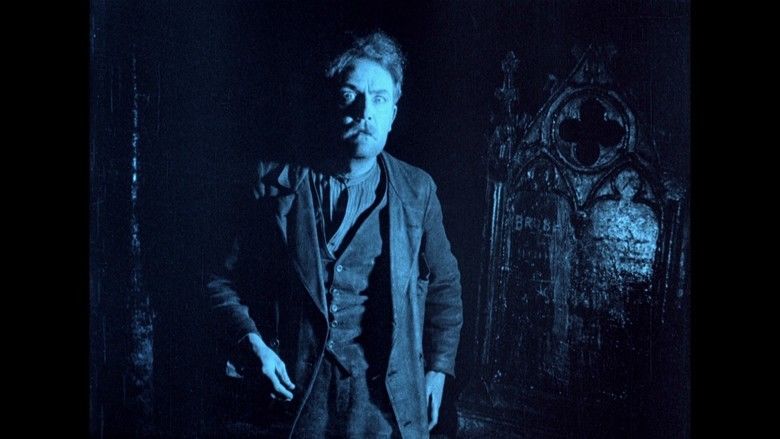
Three reasons the phantom carriage
Plot
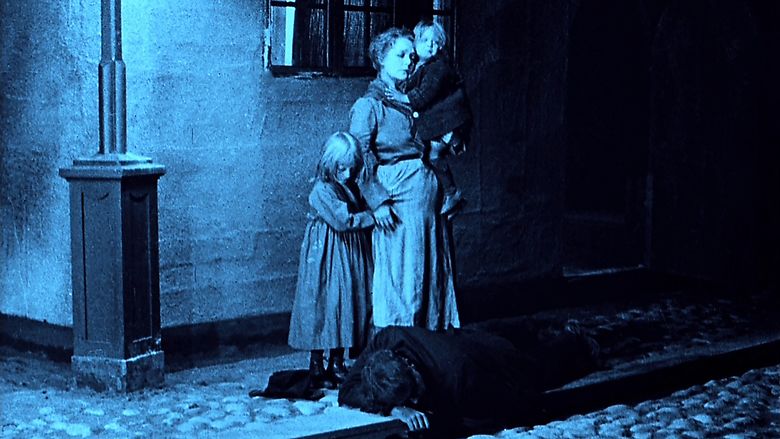
On New Year's Eve, dying Salvation Army Sister Edit has one last wish: to speak with David Holm. David, a drunkard, is sitting in a graveyard, telling his two drinking buddies about his old friend Georges, who told him about the legend that the last person to die each year has to drive Death's carriage and collect the souls of everybody who dies the following year. Georges himself died on New Year's Eve the previous year.
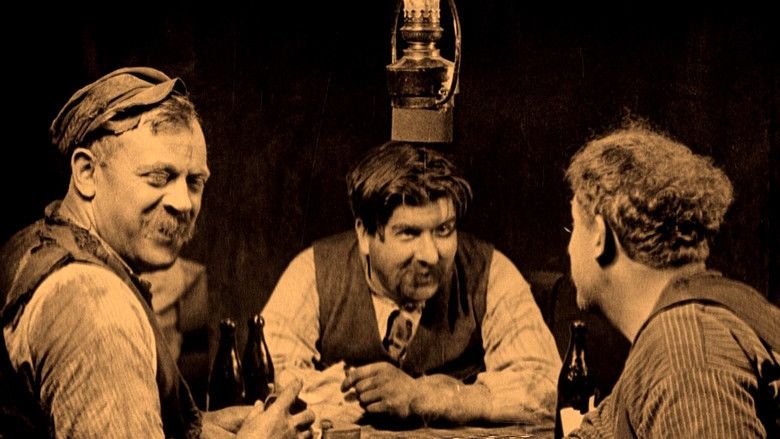
Gustafsson, a colleague of Edit, finds David, but is unable to convince him to go see her. When his friends try to drag him there, a fight breaks out, and David is struck on the head with a bottle just before the clock strikes twelve. David's soul emerges from his body as the carriage appears. The driver is Georges.
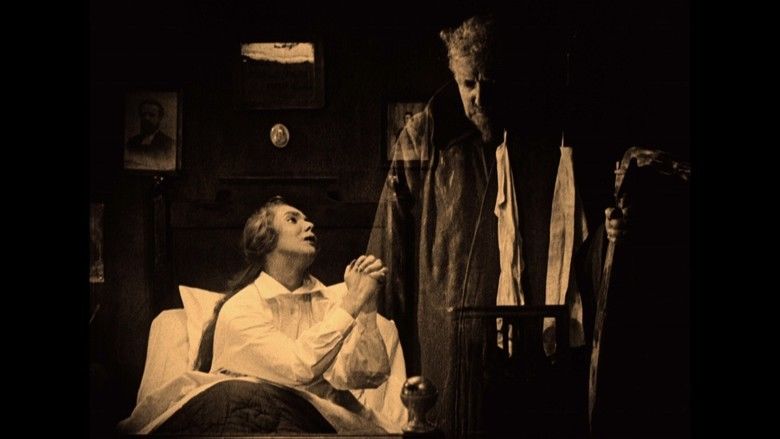
Georges reminds David of how the latter once lived a happy life with his wife Anna, their two children and his brother, until Georges led him astray. As shown in a flashback that follows, David was jailed for drunkenness. Before being released from prison, he was shown his brother, who had been sentenced to a long term for killing a man while drunk. When David went home, he found the apartment empty. Furious, he became determined to track Anna down and have his revenge.
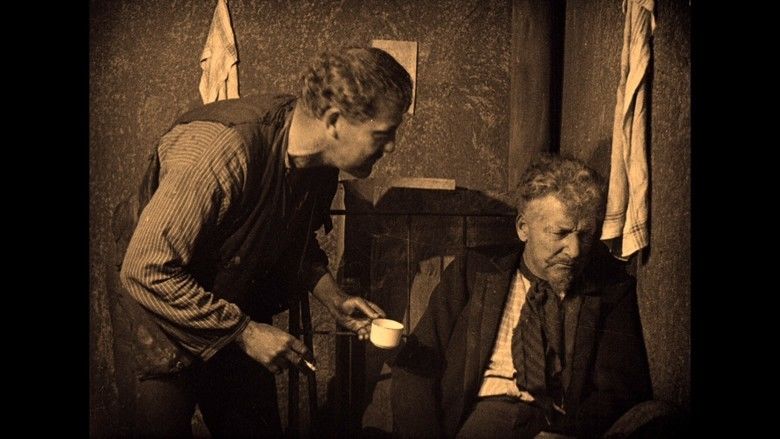
During his search throughout Sweden, David arrives at a new Salvation Army Mission on New Year's Eve. Maria does not want to answer the bell, as it is very late, but Edit lets him in. Despite his rudeness to her, she mends his coat while he sleeps. The next day, she asks him to return in one year; she had prayed that the first visitor would have good fortune for that period and wants to know the outcome of her prayer. He agrees, but before he leaves, he tears out her patches.
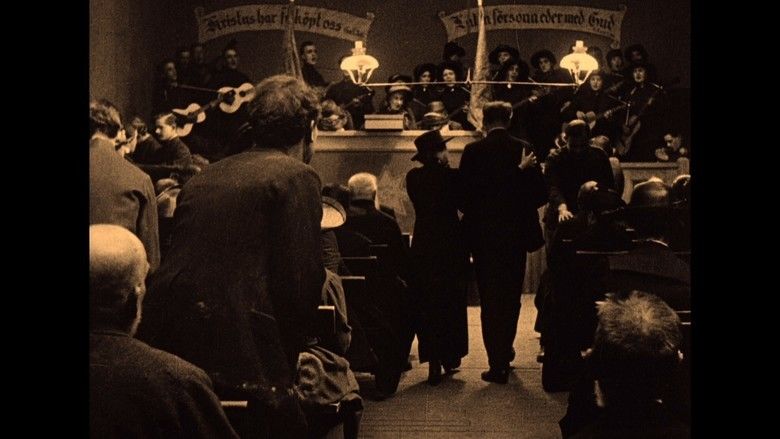
Georges informs David that the promise has to be fulfilled and takes him against his will in the carriage to Edit. In another flashback it is shown how Edit once found David in a bar with Gustafsson and another man. Edit persuaded the other man to go home with his wife and gave Gustafsson an advertisement for a Salvation Army meeting. At the meeting, Gustafsson submitted himself to God, but David remained completely unrepentant. Anna was at the meeting, but David did not recognize her. Later, Anna told Edit who she was, and Edit tried to effect a reconciliation. At first, the couple were optimistic, but soon David's behavior drove Anna to despair once again. One night, Anna pleaded with him not to expose their children to his consumption (the same fatal disease Edit caught from him). When he refused, Anna locked him in the kitchen and tried to flee again with their children, but fainted. He broke through the door with an axe, but did not physically hurt her.
When Georges arrives in Edit's room, she begs him to let her live until she sees David again. She thinks she is the one to blame for his magnified sins, as she brought the couple together again. When David hears this, he is deeply moved. He kisses her hands, and when Edit sees his regret, she can die in peace. Georges does not take her, saying others will come for her. He then shows David that Anna, afraid of leaving her children alone after she herself dies of consumption, is planning to poison them and herself. David begs Georges to do something, but Georges has no power over the living. Then David regains consciousness in the graveyard. He rushes to Anna before she can act. With great difficulty, he convinces her that he sincerely wishes to reform.
Cast
Development
Since 1917 there was a deal between Selma Lagerlöf and A-B Svenska Biografteatern to adapt at least one Lagerlöf novel for film every year. Prior to The Phantom Carriage, Sjöström had made three of these adaptions which had all been well received by critics, the audience and Lagerlöf herself. Since all of them had taken place in a rural setting, Sjöström felt that he wanted a change for the fourth and suggested the urban, gritty Körkarlen. Lagerlöf was initially sceptical about the possibility to adapt the novel's elements of occultism and mysticism, and Sjöström was well aware of the difficulties. The script took eight days to finish and in April 1920 Sjöström travelled to Lagerlöf's mansion Mårbacka in Värmland to present it. After two hours of Sjöström reading loud and performing the whole script by himself, Lagerlöf responded by offering him dinner, which Sjöström took as an approval.
Filming
Shooting took place from May to July 1920 in the newly started Filmstaden studios in Solna. The set design was inspired by the southern Swedish town Landskrona, which corresponded to what Lagerlöf had in mind when writing the novel. Lagerlöf's original wish was to film it on location in Landskrona, but Sjöström chose to do it in studio for the technical benefits.
Post-production
Post-production was famously long and intense due to the extensive use of special effects, developed by cinematographer Julius Jaenzon and lab executive Eugén Hellman. Double exposures made in the camera (optical printing wasn't available until the early 1930s), had been used before by Jaenzon, already in Sir Arne's Treasure from 1919, but were here developed to be far more advanced with several layers. This allowed the ghost characters to walk around in three dimensions, being able to first be covered by an object in the foreground, but when in the same take walking up in front of the object, it would be seen through the ghost's semi-transparent body. One difficulty was that the cameras were hand-cranked, meaning that the camera had to be cranked at exactly the same speed in the different exposures for the end result to appear natural.
Reception
Film review aggregator Rotten Tomatoes reports an approval rating of 100%, based on 11 reviews, with a rating average of 9/10. Jonathan Rosenbaum from Chicago Reader praised the film, calling it a masterpiece.
Influence
The film was a powerful influence on the later Swedish film director Ingmar Bergman who also utilised the figure of Death in The Seventh Seal, where the referring to him as a "strict master" is a reference to The Phantom Carriage. Bergman also cast Sjöström in the leading role for Wild Strawberries, which also features references to the film. Bergman has said that he first saw it at 15 and watched it at least once every year. The television play The Image Makers (2000), directed by Bergman, is a historical drama depicting the making of The Phantom Carriage.
Stanley Kubrick's 1980 horror film The Shining features several thematic similarities, as well as the famous sequence where Jack Nicholson uses an axe to break through a wooden door.
Soundtracks & home media
The original screenings didn't have an original soundtrack, instead various pieces by Ture Rangström, Mendelsohn, Saint-Saëns and Max Reger were performed by the orchestras. For a long time several different soundtracks, generally of low quality, were used for television screenings and video releases. However, in 1998, on demand from the Swedish Film Institute, a new soundtrack was composed by renowned Swedish silent film composer and live pianist Matti Bye, which was highly praised and has been featured on all following VHS and DVD releases.
At the 2007 San Francisco International Film Festival a new soundtrack was composed and performed live by pop icon Jonathan Richman. No Region-1 DVD release with this version has been announced.
In 2008, the now defunct Tartan Films (now Palisades Tartan), under license from the Swedish Film Institute, released a region 2 DVD version of the film, with a newly commissioned soundtrack by the electronic music group KTL. In 2011, the Criterion Collection released a restored version of the film on Blu-ray and DVD.
References
The Phantom Carriage WikipediaThe Phantom Carriage IMDbThe Phantom Carriage Rotten TomatoesThe Phantom Carriage themoviedb.org
